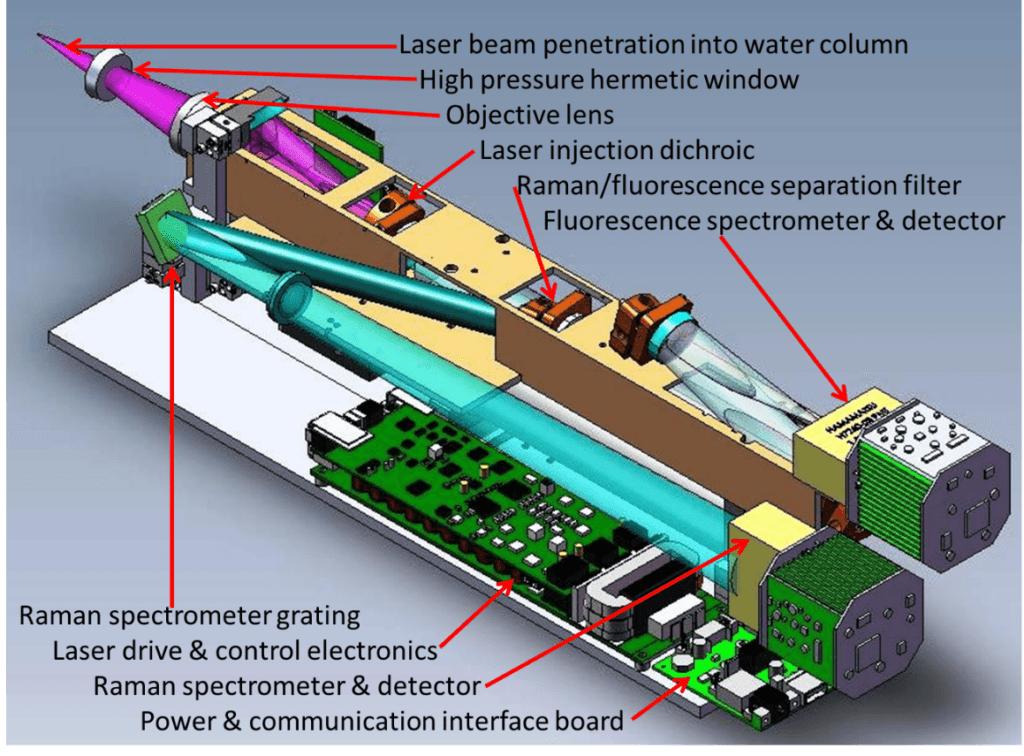Deep ocean AUV sensor for trace chemical/biological material

The goal of the deep UV chemical seep detector and classifier development is to provide a new generation of instrumentation for real-time, in-situ, detection of bulk and trace crude oil, drilling fluids, and other hydrocarbons and chemicals in natural Ocean water columns without the need to acquire or ingest samples or other complex sample preparation or handling. This technology is a fusion of deep ultraviolet excited resonance Raman (RR) and native fluorescence (NF) spectroscopy.
The deep UV instrument is an integrated assembly with outside dimensions about 5.5” wide, 4.5” high, and 21” long. A deep UV laser beam generated within the instrument is focused by an objective lens, through a window in the pressure housing of the underwater vehicle, and into the surrounding water column. This laser beam excites whatever material is immediately outside the window, whether it is bulk material in the form of large globules of sample, small particulates, or dissolved chemicals in the water column. The deep UV laser beam excites the material and produces both Raman and fluorescence emissions which are collected by the same objective lens and collimated into the combined Raman and fluorescence instrument.
The instrument operates at a spectral data accumulation rate between 5 Hz and 20 Hz with sample duration about 60 µs. Overall power consumption is less than 20 W. Overall dimensions are 5.5” high, 4.5” wide, and 21” long. Fluorescence emissions from organic materials such as crude oils and related compounds are typically tens of thousands to millions of times stronger than Raman emissions. As a result, it is typical that high signal to noise data can be accumulated from these compounds in a single laser pulse, lasting less than 60 µs. Raman emissions typically take averaging over a number of laser pulses and make take up to a minute to accumulate, depending on the strength of the Raman emissions from the targeted compounds.
This instrument is a fully integrated instrument with deep UV laser and drive/control electronics, laser beam optical processing components to remove all emission wavelengths except for the 248.6 nm laser line, injection dichroic filter, Rayleigh blocking filter for removing excessive Rayleigh (laser) scatter from a target to enter the Raman and fluorescence spectrometers, a Raman/fluorescence separation filter, separate Raman and fluorescence spectrometers with associated detectors and detector control electronics, an imbedded microprocessor for overall control, processing, and communication of both operating and spectral data as well as processed data and chemical classification results, and finally a power and communication interface.

Left side view of fully integrated deep UV Raman & fluorescence instrument. Overall dimensions 5.5″ high, 4.5″ wide and 21″ long.

REMUS Deep Ocean Crude Oil Seep Sensor
